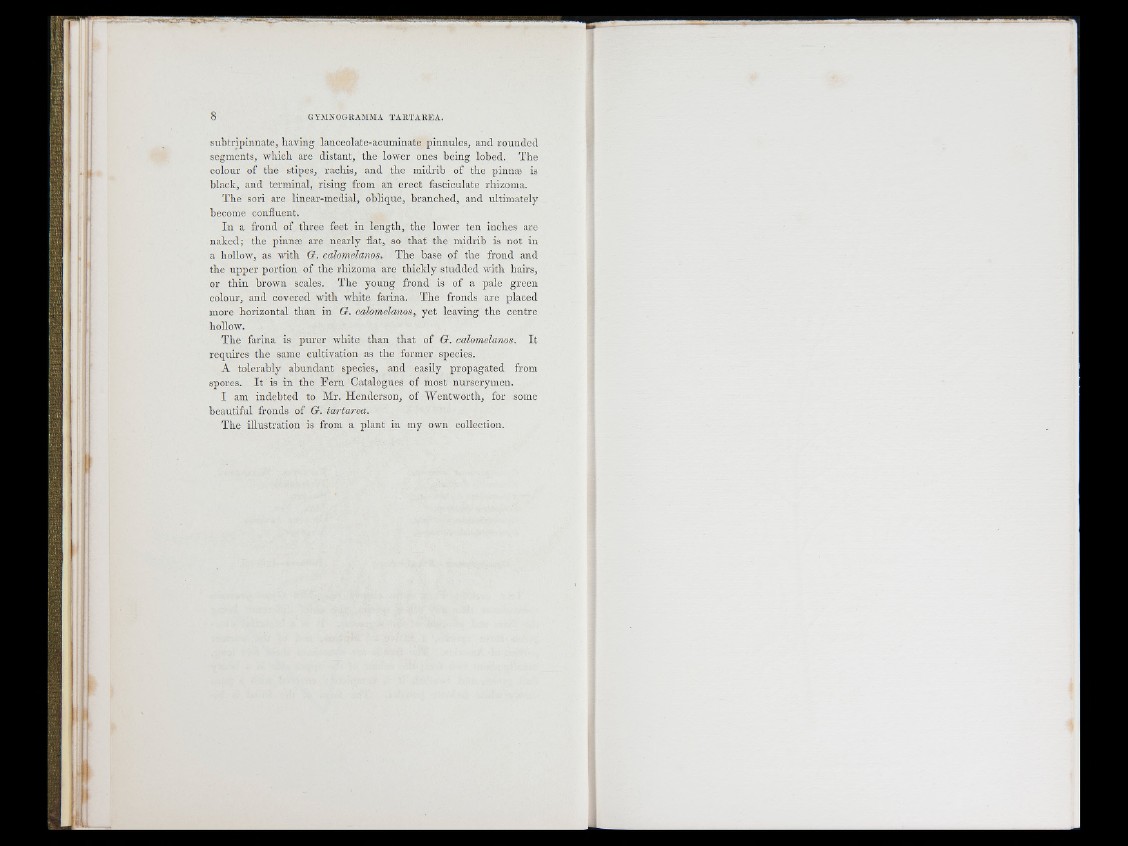
G YM N O G IIAM JIA T A R T A R E A .
subtriplnnate, having lanceolate-acuminate pinnules, and rounded
segments, which are distant, the lower ones being lobed. The
colour of the stipes, rachis, and the midrib of the pinna; is
black, and terminal, rising from an erect fasciculate rhizoma.
The sori are linear-medial, oblique, branched, and ultimately
become confluent.
In a frond of three feet in length, the lower ten inches are
naked; the pinna; are nearly flat, so th a t the midrib is not in
a hollow', as with O. calomelanos. The base of the frond and
the up p e r portion of the rhizoma are thickly studded with hairs,
or th ill brown scales. The young frond is of a pale green
colour, and covered with white farina. The fronds are placed
more horizontal than in G. calomelanos, yet leaving the centre
hollow.
The farina is p u re r white than th a t of G. calomelanos. I t
requires the same cultivation as the former species.
A tolerably abundant species, and easily propagated from
spores. I t is in the F e rn Catalogues of most nurserymen.
I am indebted to Mr. Henderson, of Wentworth, for some
beautiful fronds of G. tartai'ea.
The illustration is from a plant in my own collection.
i l